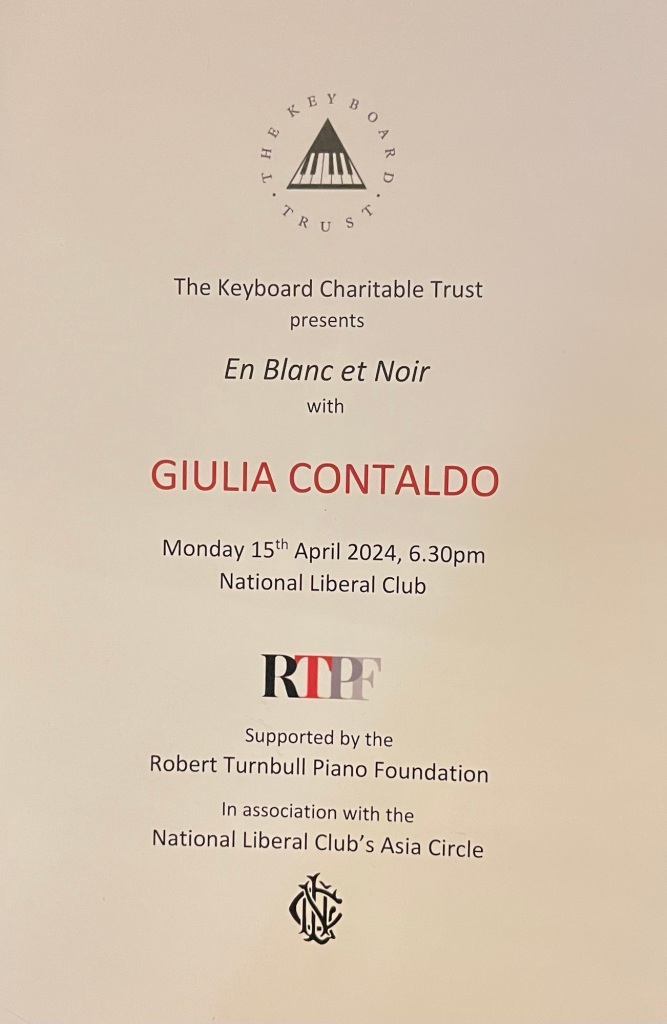
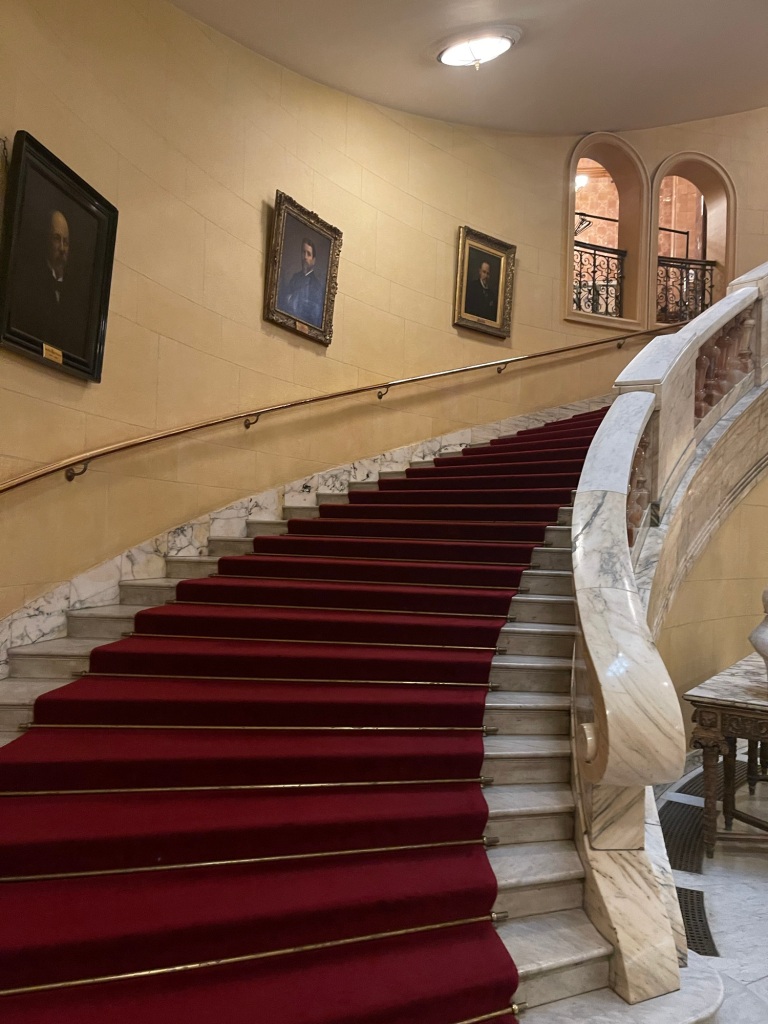
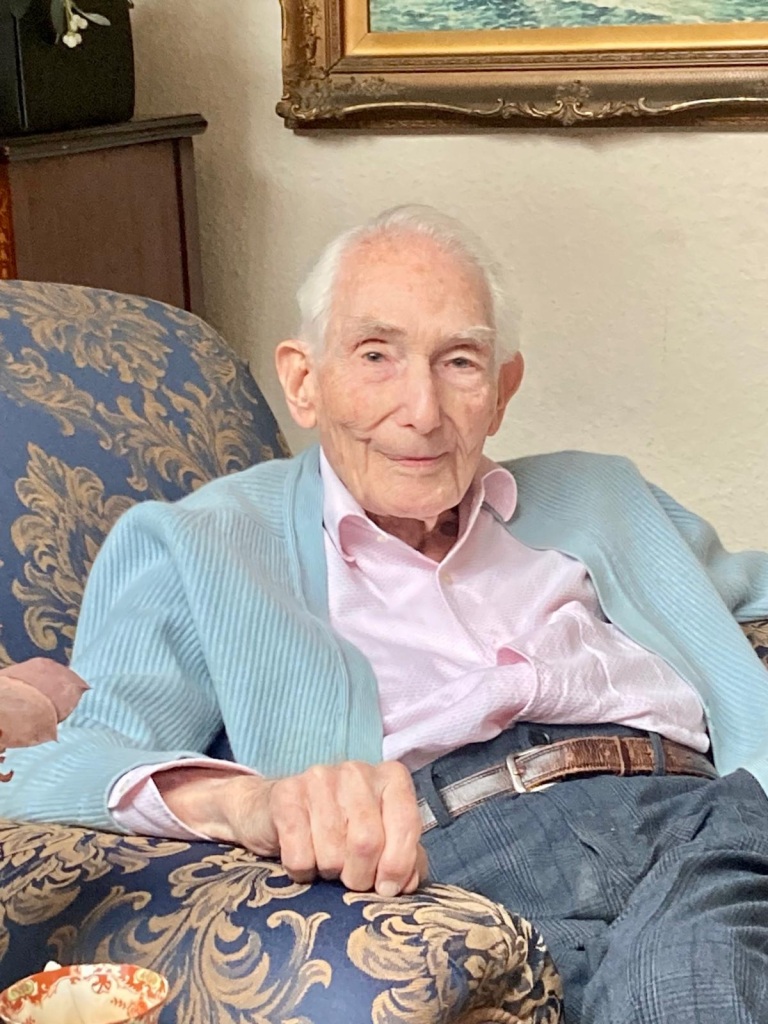
This was the final concert in a series of six recitals sponsored so generously by the Robert Turnbull Piano Foundation in collaboration with the National Liberal Club’s Asia Circle.It had begun with a greeting to the founder of the Keyboard Trust ,John Leech.Unable to attend this evening but who will be 99 years old in a few day’s time and a greeting from us all was recorded and will be shown to him and his wife Noretta Conci on his birthday of Sunday the 21st April.

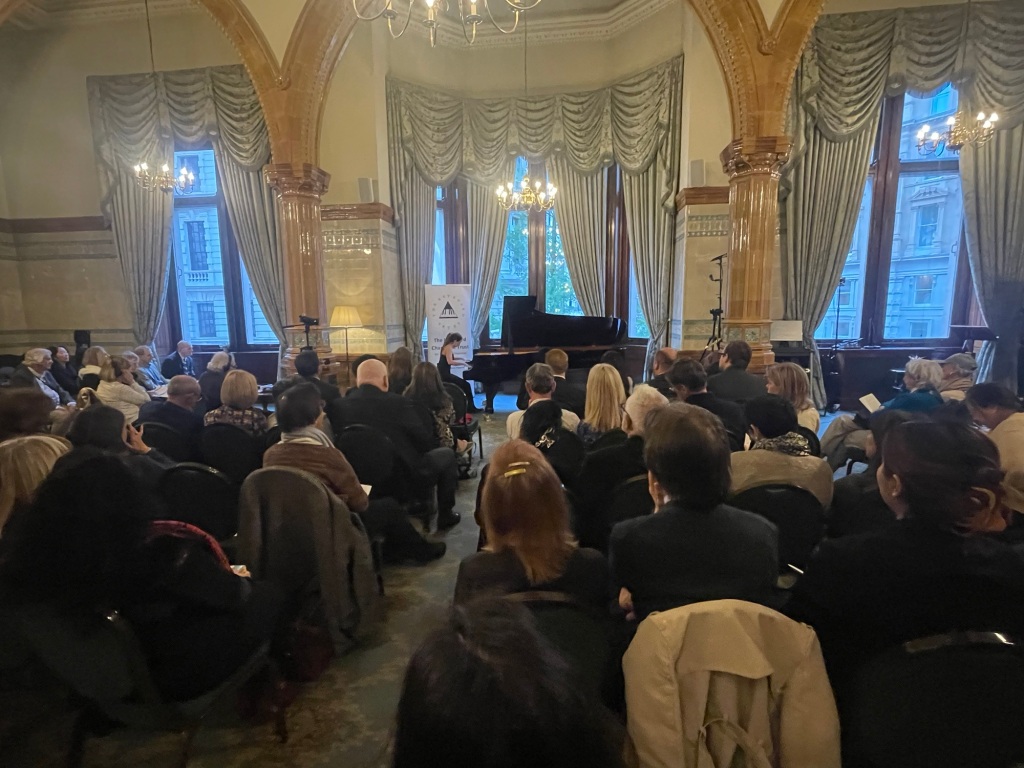


Giulia Contaldo enchanted and entranced the audience of the Liberal Club with playing of superb musicianship and a kaleidoscope not only of colours but of intense concentration as she told a story of wondrous marvels.
A Respighi Nocturne of ethereal beauty but also of passionate outpourings of overwhelming intensity
A Debussy of fluidity and aristocratic control allied to a technical mastery that allowed the fleeting lightness of ‘movement’ to sweep across the keys with transcendental mastery.
The passionate intensity she brought to Wagner’s Liebestod was even more astonishing for the palette of colours that she used to paint a picture of burning intensity and searing inner murmurings
But it was in Schubert that her great artistry was revealed to the full with playing of aristocratic control as she allowed Schubert’s mellifluous outpourings to speak with heart rending immediacy and simplicity.

The simple fluidity of the Notturno by Respighi was played with subtle half colours and a sense of balance that allowed the wistful melody to glow on the gentle breeze that she created with infinite care and sensitivity.Growing in intensity with passionate involvement but always a sense of line that guided us through this seemingly innocent little piece that in Giulia’s hands became a ravishing tone poem of jewels that were allowed to shine with purity and beauty.

It was the same fluidity and fantasy that she brought to Debussy.But this was not the more usual impressionistic mist but a performance of virile rhythmic drive played with a kaleidoscope of changing colour that created a picture of the ‘reflections’ that Debussy was depicting in music. A sense of line of intelligence and musicianship but allied to a technical mastery as cascades of notes were merely streams of sound on a wave of sultry beauty.The simplicity and glowing purity she brought to the the sounds in the coda were indeed like drops of crystalline water falling so perfectly onto a canvas, as only a true poet of the keyboard could aspire to. ‘Hommage a Rameau’ was a movement much loved by Rubinstein because it needs an aristocratic sense of control but also a subtlety of sound without any sentimentality.This is like a Greek temple of poignant beauty and a feeling that history has past through the atmosphere that is evoked by such a noble edifice.Giulia had a range of sound from the opening French aristocratic cantabile that was truly Rubinstein’s, but there was also passionate conviction and masterly control as she opened up to the climax with great flourishes over the entire keyboard.The wonderful change of harmony at the end was of whispered secrets of heart rending intensity. In this one piece Giulia showed us her masterly control of the keyboard and a range of sounds that could bring this extraordinary piece to life with the virile intensity that is of such poignant significance.’
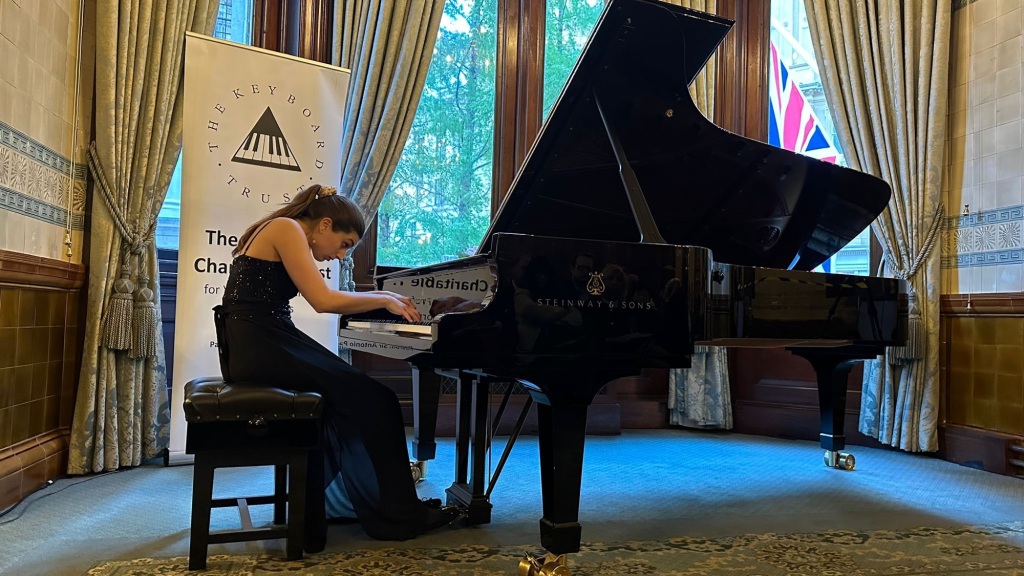
‘Movement’ was played with extraordinary clarity and murmured precision as the accents were like signposts in this breeze of sounds.The declamations in the right hand answered by the left were even more surprising over such a murmured atmosphere.Opening up into a transcendental display of rhythmic drive where notes were spread over the entire keyboard with a technical mastery that never allowed the music to become clouded or interrupted.The murmured brilliance of the opening was a never ending undercurrent throughout this movement as the notes gradually moved closer to the top of the keyboard with strands of melody that lit up this stream of sounds with jewel like rays of light.Disappearing into the distance I have rarely heard this movement finish with such mastery and musicianship.This was the Impressionism of vision and virile emotions that only a true musician could find in Debussy who surely is the greatest pianistic innovator since Chopin.
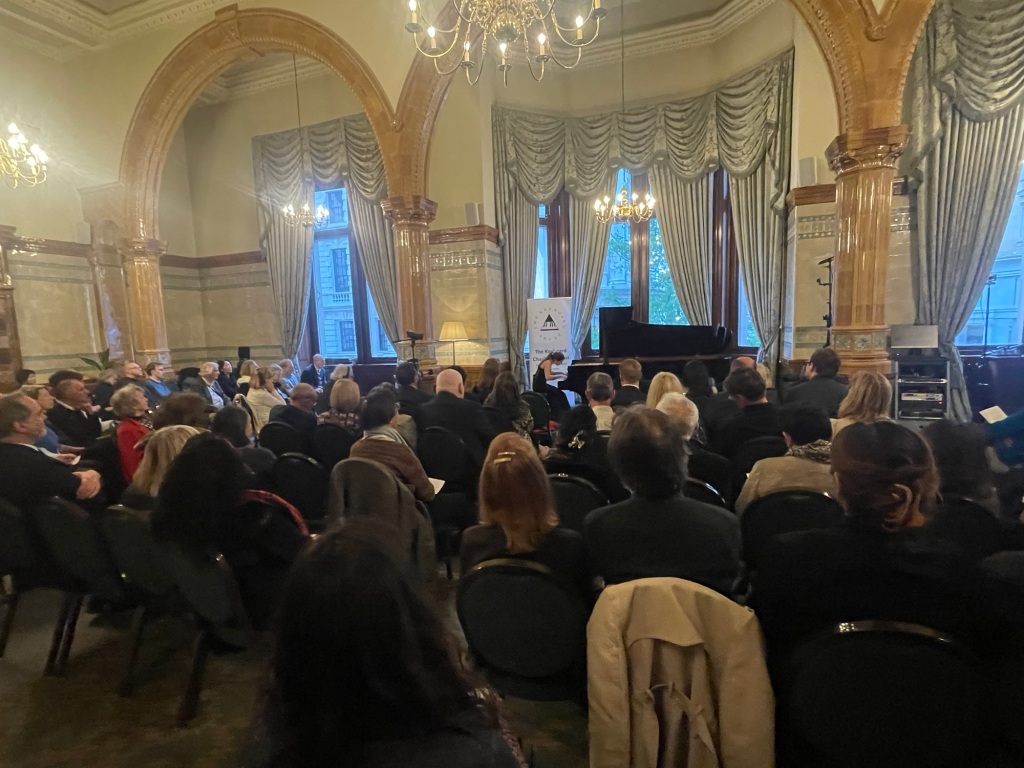
The opening of Liebestod was like a call to arms leading to sumptuous strands of melody that weaved there way forward with ravishing beauty .The clarity of the counterpoints was always perfectly controlled as they grew in ever more passionate intensity.The climax was played with a dramatic force and passionate conviction that was quite breathtaking as indeed it should be.We all knew that this burning cauldron of sounds was about to explode but it was the masterly control that kept us with baited breath waiting for the moment when Giulia would at last succumb to this red hot atmosphere and lose all control with frenzied movements and theatrical command.Allowing the music to gradually die away to a mere murmur where even here in Giulia’s poetic hands there was a sense of balance that allowed the final melodic notes to glisten like jewels as they lay exhausted after such passionate intensity.A remarkable performance where once again Giulia’s sense of architectural shape made such a poignant statement of one unified whole.

The whole of the second half was taken up with Schubert’s penultimate Sonata.A work lasting forty minutes and was one of the last works that the composer was to write before his untimely death.Long neglected after his death because it needs a true musician to be able to mould this great edifice into one unified whole.One who can see the whole architectural shape but at the same time turn Schubert’s seemingly endless streams of mellifluous outpourings into sounds which should have the same inflections as a singer ,where every note has a story to tell of great significance.Giulia gave a superb performance that keep the audience mesmerised from the dynamic opening declamations of intent to the final equally imperative chords that come forty minutes later.It was of course in between that Giulia brought every strand of music vividly to life with poetry,whimsical fantasy,passionate drive and above all with the simplicity of Art that conceals Art.Beethovenian you might say in its rigour and formal construction which is what Schubert was accused of in his own time .But there is a content of Viennese charm and dramatic invention , less irascible and tempestuous that is quite unique to Schubert .It takes a pianist of great musicianship to be able to enter into this world of poetic fantasy and mellifluous beauty without loosing the overall architectural shape of monumental invention and drive.There should be from the first to the last note an undercurrent on which the music evolves and the pianist like a conductor must show his players with flexibility and colour how to fill this vast canvas where the wood must be constructed with the beauty of the trees still intact.
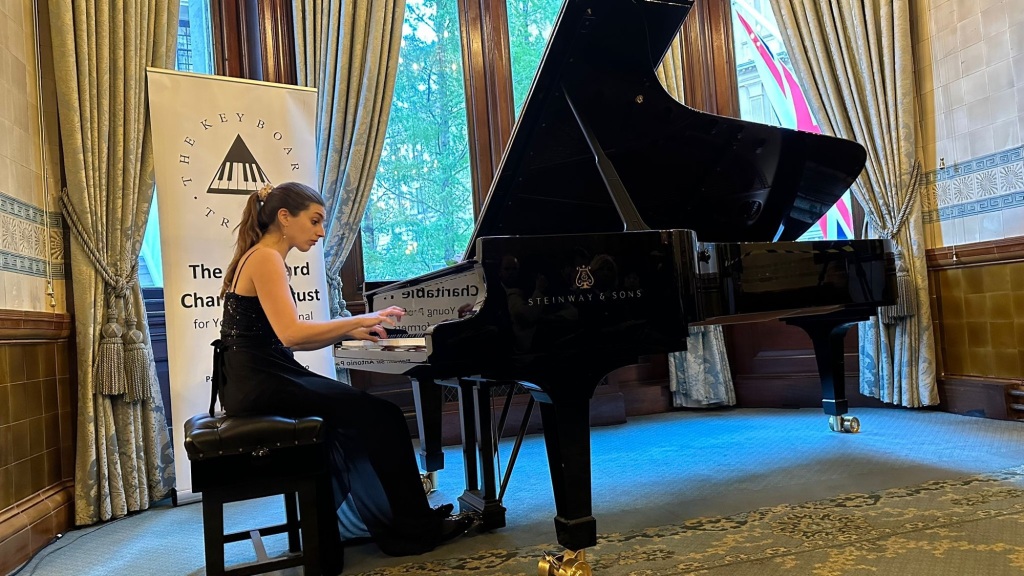
There was absolute clarity to Giulia’s playing with a sense of improvisation as she unwrapped the music before our very eyes and where the music was allowed to flow so naturally as it built up with rhythmic intensity.Some very personal touches too brought the music vividly to life in a true musical conversation .Streams of beautiful seemless scales in the development floated on gently vibrating chords as the music gradually returned to the opening imperious chords.A coda of extreme delicacy where the legato melodic line was accompanied by whispered staccato notes leading to clouds of sounds that brought this movement to a delicate close ready for the poignant simplicity of the Andantino.There was purity and delicacy in the melodic line over the continuous barcarolle like accompaniment .A melodic line of searing intensity as the heart beat so gently underneath.A remarkable control of sound and a masterly control of the pedal that allowed for purity without ever any clouding of the texture .Gradually building up to a storm of truly Beethovenian intensity and drive and a recitativo of heart rending intensity rebuked by the composer with such unusual vehemence until surrendering to the magic return of the main theme.Returning with the most ravishing embellishments and comments that were played with exquisite delicacy revealing an ever more masterly control of sound.She brought sparkling brilliance to the Scherzo and tender refined elegance to the Trio.The ever more delectable return of the Scherzo this time ending with the same finality that owed more to Beethoven than Schubert! The gently flowing Rondo was of subtle shading and beauty as the episodes unfolded with teasing charm and gentle brilliance before burning themselves out.An attempt at restarting the Rondo with Schubert teasingly trying to find a way out which he does with a coda of burning intensity and dynamic brilliance.A final brusque recollection of the Rondo theme leads to the same dramatic opening chords that this time close a story that has spanned all the emotions of the genial invention and mastery of a poet destined to die just a few months later.A performance played by Giulia with mastery and poetry and above all supreme musicianship.
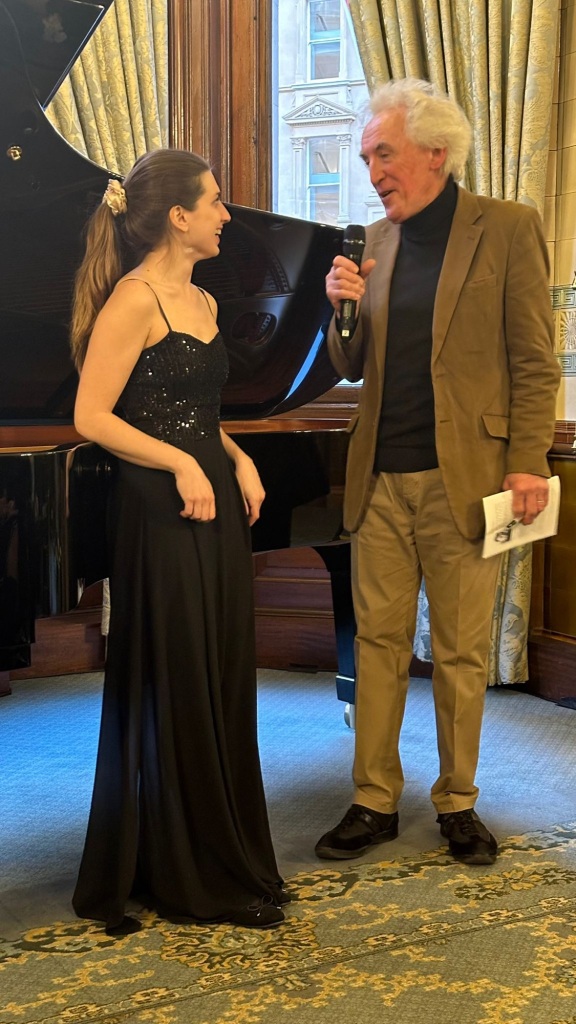


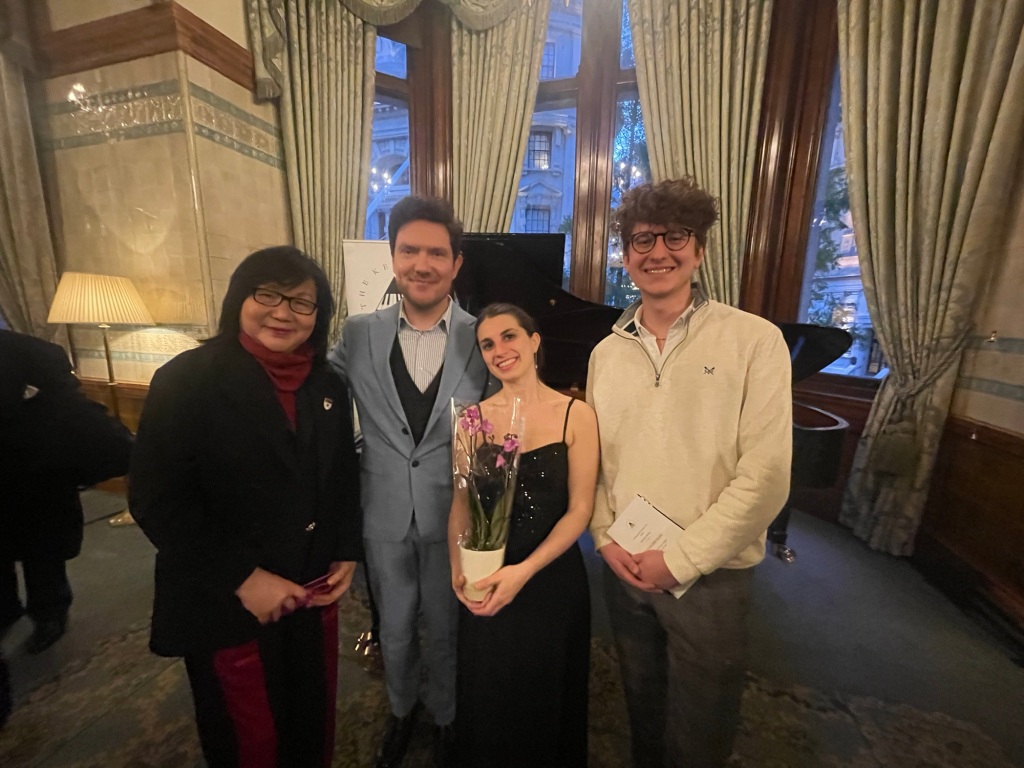





Ottorino Respighi
18 July 1879 Bologna , Italy. 18 April 1936 (aged 56) Rome, Italy
The Sei pezzi per pianoforte (“Six pieces for piano”),P.044, is a set of six solo piano pieces written by the Italian composer Ottorino Respighi between 1903 and 1905. These predominantly salonesque pieces are eclectic,drawing influence from different musical styles and composers. The pieces have various musical forms and were composed separately and later published together between 1905 and 1907 in a set under the same title for editorial reasons; Respighi had not conceived them as a suite , and therefore did not intend to have uniformity among the pieces. The set, under Bongiovanni, became his first published work. Five of the six pieces are derived from earlier works by Respighi, and only one of them, the “Canone”, has an extant manuscript.
- Valse Caressante” – (“Tempo lento di Valzer.”)
- “Canone” – (“Andantino”)
- “Notturno” – (“Lento.”)
- “Minuetto”
- “Studio” – (‘Presto”)
- “Intermezzo-Serenata” – (“Andante calmo”)
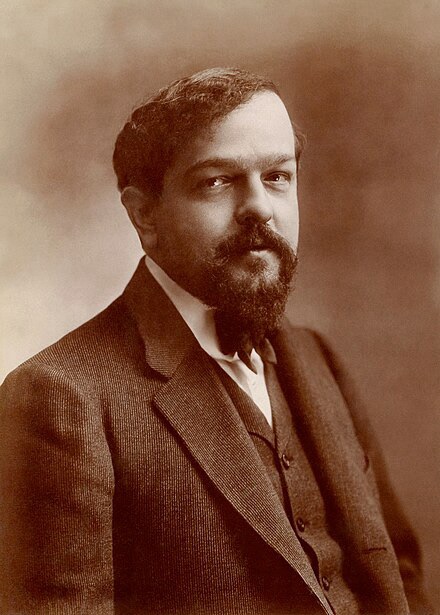
(Achille) Claude Debussy. 22 August 1862 – 25 March 1918 is sometimes seen as the first Impressiomnist composer, although he vigorously rejected the term. He was among the most influential composers of the late 19th and early 20th centuries
Images is a suite of six compositions for solo piano by Claude Debussy. They were published in two books/series, each consisting of three pieces. The first book was composed between 1901 and 1905, and the second book was composed in 1907. Debussy wrote to his publisher , Jacques Durand about the first series : “Without false pride, I feel that these three pieces hold together well, and that they will find their place in the literature of the piano … to the left of Schumann, or to the right of Chopin… “
Liszt Tristan und Isolde – Liebestod S.447

Ludwig and Malvina Schnorr von Carolsfeld as Tristan and Isolde in the first performance, conducted by Hans von BulowHans
Tristan and Isolde is a musical drama in three acts written by Richard Wagner between 1857 and 1859, and premiered in 1865. Two years after the debut of the work at the National Theater of Munich, Franz Liszt (who was Wagner’s father in law) made a piano transcription of Isolde’s final aria. The piece, called “Mild und leise”, was referred to as “Verklärung” (Transfiguration) by Wagner. Liszt prefaced his transcription with a four bar excerpt from the Love Duet from Act II, which in the opera is sung to the words “sehnend verlangter Liebestod”. Accordingly, he referred to his transcription as ‘Liebestod’. Later it was designated with the catalogue number S. 447. Liszt’s transcription (which underwent a revision in 1875) became famous in Europe well before Wagner’s opera reached most places.

Tristan und Isolde (Tristan and Isolde),was composed between 1857 and 1859 and premiered at the Konigliches Hoftheater und Nationaltheater in Munich on 10 June 1865 conducted by Hans von Bulow .Wagner referred to the work not as an opera, but called it “eine Handlung” (literally a drama, a plot, or an action).
The score of Tristan und Isolde has often been cited as a landmark in the development of Western music.[15] Throughout the opera, Wagner uses a remarkable range of orchestral colour, harmony, and polyphony, doing so with a freedom rarely found in his earlier operas. The very first chord in the piece, the Tristan chord , is of great significance in the move away from traditional tonal harmony as it resolves to another dissonant chord:

Franz Peter Schubert 31 January 1797 – 19 November 1828
Schubert’s last three piano sonatas , D 958, 959 and 960, are his last major compositions for solo piano. They were written during the last months of his life, between the spring and autumn of 1828, but were not published until about ten years after his death, in 1838–39.Like the rest of Schubert’s piano sonatas, they were mostly neglected in the 19th century but by the late 20th century, however, public and critical opinion had changed, and these sonatas are now considered among the most important of the composer’s mature masterpieces.
The last year of Schubert’s life was marked by growing public acclaim for the composer’s works, but also by the gradual deterioration of his health. On March 26, 1828, together with other musicians in Vienna he gave a public concert of his own works, which was a great success and earned him a considerable profit. In addition, two new German publishers took an interest in his works, leading to a short period of financial well-being. However, by the time the summer months arrived, Schubert was again short of money and had to cancel some journeys he had previously planned.
Schubert had been struggling with syphilis since 1822–23, and suffered from weakness, headaches and dizziness. However, he seems to have led a relatively normal life until September 1828, when new symptoms appeared. At this stage he moved from the Vienna home of his friend Franz von Schober to his brother Ferdinand’s house in the suburbs, following the advice of his doctor; unfortunately, this may have actually worsened his condition. However, up until the last weeks of his life in November 1828, he continued to compose an extraordinary amount of music, including such masterpieces as the three last sonatas.
Schubert probably began sketching the sonatas sometime around the spring months of 1828; the final versions were written in September. The final sonata was completed on September 26, and two days later, Schubert played from the sonata trilogy at an evening gathering in Vienna.In a letter to Probst (one of his publishers), dated October 2, 1828, Schubert mentioned the sonatas amongst other works he had recently completed and wished to publish.However, Probst was not interested in the sonatas,and by November 19, Schubert was dead.In the following year, Schubert’s brother Ferdinand sold the sonatas’ autographs to another publisher, Anton Diabelli, who would only publish them about ten years later, in 1838 or 1839.[16] Schubert had intended the sonatas to be dedicated to Hummel , whom he greatly admired. Hummel was a leading pianist, a pupil of Mozart , and a pioneering composer of the Romantic style (like Schubert himself).However, by the time the sonatas were published in 1839, Hummel was dead, and Diabelli, the new publisher, decided to dedicate them instead to composer Robert Schumann , who had praised many of Schubert’s works in his critical writings.
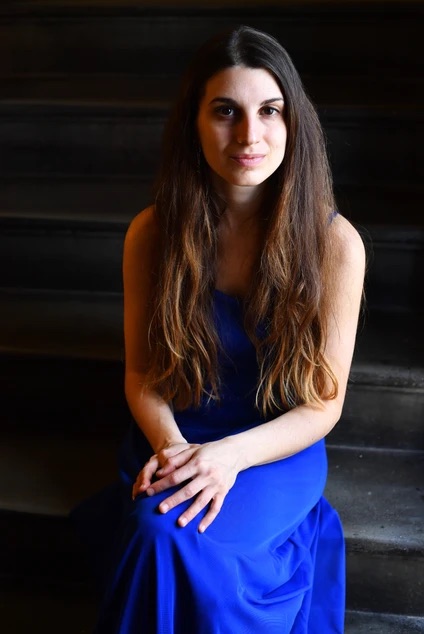
Giulia Contaldo attracted international attention when she replaced Elisso Virsaladze in a performance (broadcast live on BBC Radio 3) of Schumann’s Piano Concerto with the BBC Philharmonic Orchestra at Bridgewater Hall, Manchester. ‘A dashing account’ — Guardian
Giulia was born in Florence and graduated from Florence’s Luigi Cherubini Conservatory. She went on to study at the International Piano Academy at Imola where she completed her diploma with Jin Ju in 2019. She subsequently won a scholarship to study for the Advanced Postgraduate Diploma in Piano Performance at the Royal Northern College of Music with Graham Scott and Dina Parakhina and graduated with distinction. In 2021/2022 she studied on the International Artist Diploma Course at the RNCM.Giulia won First Prizes at the 28th J.S. Bach Italian National Competition (S. Levante) and the 15th International Maria Giubilei International Piano Competition. She also won prizes at the International Competition Prémio Internacional de Piano Figueira da Foz (Coimbra), the 32nd Concours Européen de Musique de Chambre organized by FNAPEC (Paris), the Massarosa International Piano Competition and the James Mottram International Piano Competition. In 2022, she won Second Prize and the Classical Sonata Special Award at the Verona International Piano Competition. Also in 2022, she won the Concerto Competition and the Piano Duo Prize at the RNCM — and was awarded the prestigious Gold Medal.As a soloist, Giulia has performed with the BBC Philharmonic, Royal Liverpool Philharmonic Orchestra, Manchester Camerata, Orchestra dell’ Arena di Verona, RNCM Symphony Orchestra, Young Musicians European Orchestra, Giovane Orchestra di Abruzzo and the Orchestra del Carmine di Firenze. She has performed at many festivals throughout Europe and at prestigious venues including Bridgewater Hall, Wigmore Hall, Musica Insieme (Bologna), Teatro Alighieri (Ravenna) and the Teatro Filarmonico (Verona). She is also a passionate chamber musician.Since 2022, Giulia has been continuing her studies at the Haute Ecole de Musique in Geneva with Ricardo Castro. She is also a Professor at the Conservatorio A. Scontrino in Trapani, Sicily
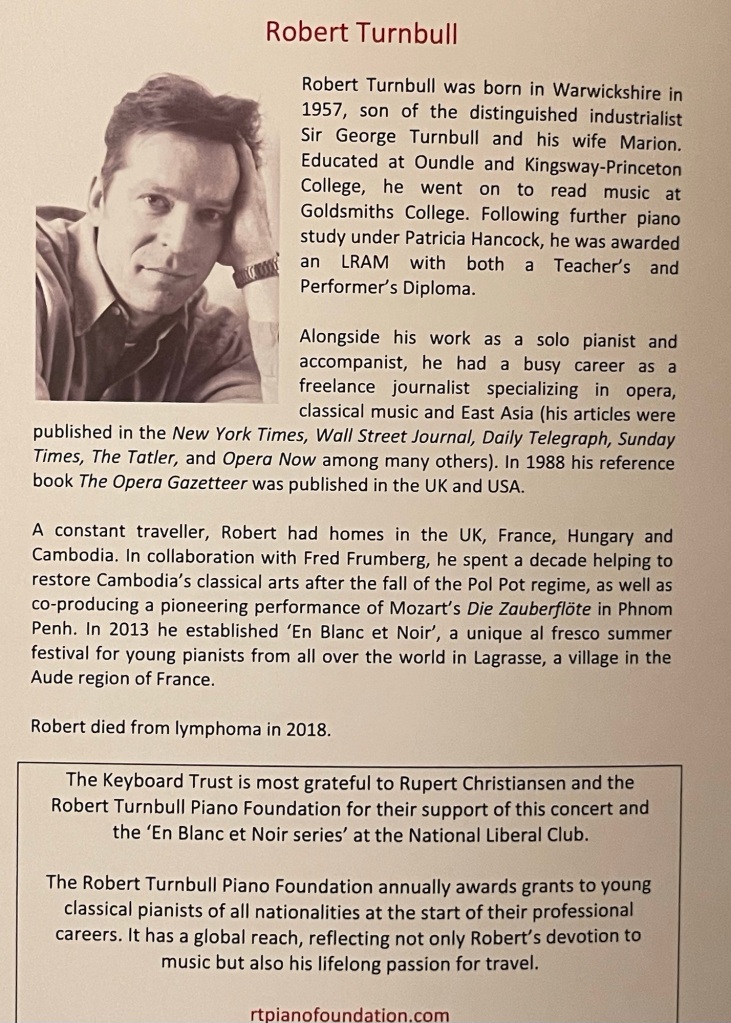


Our series of six concerts at the National Liberal Club :
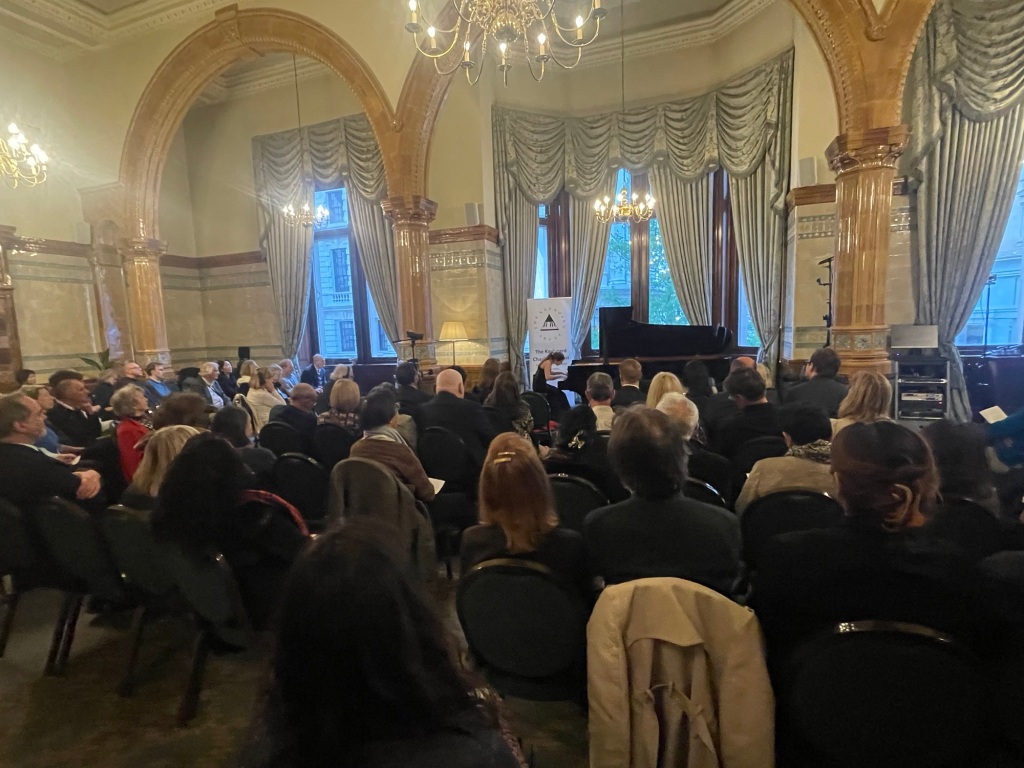
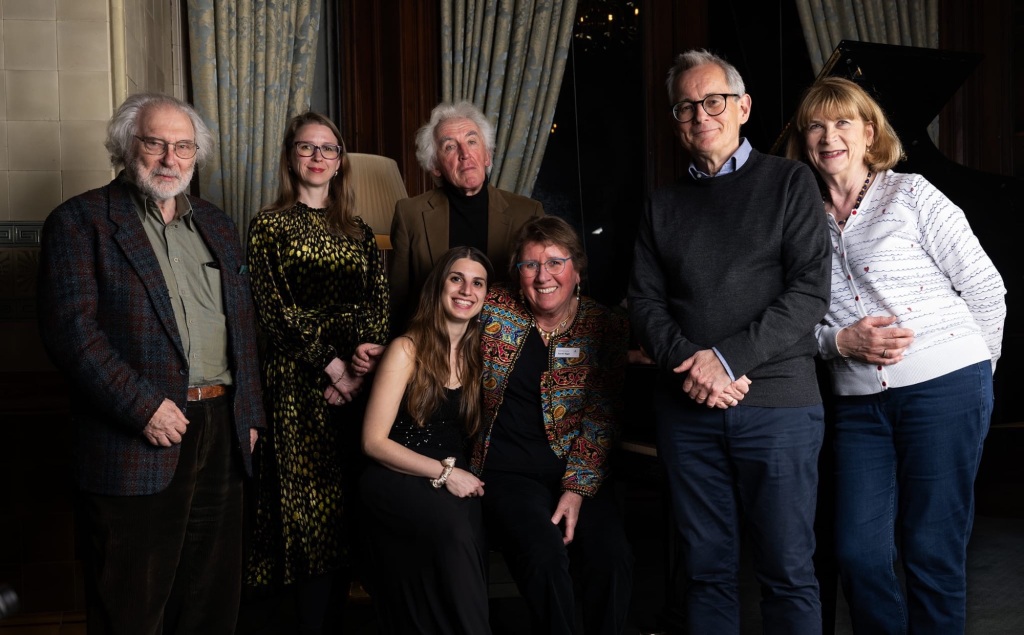

https://youtube.com/live/ZMCS7DT_mNg?feature=shared